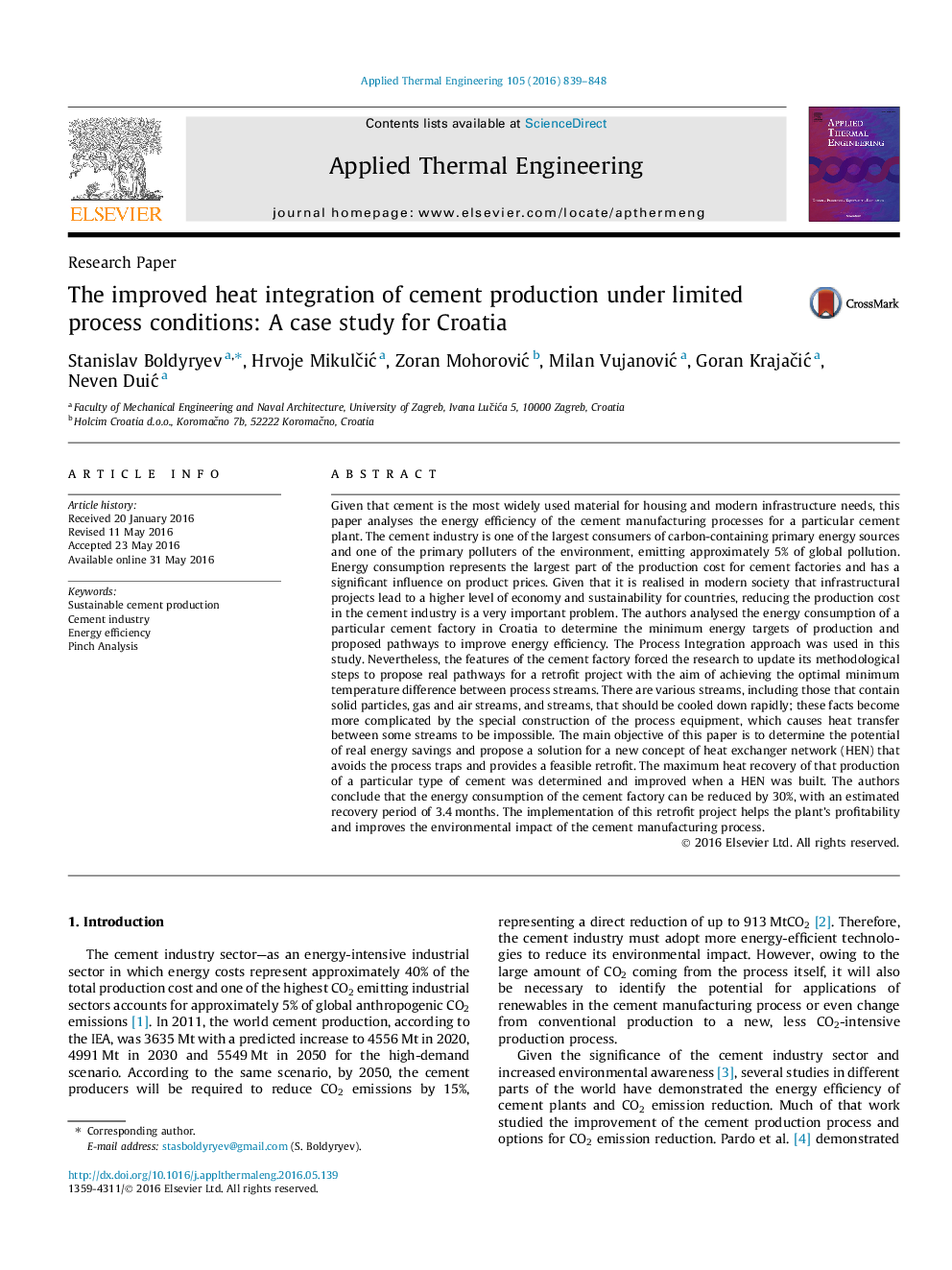| کد مقاله | کد نشریه | سال انتشار | مقاله انگلیسی | نسخه تمام متن |
|---|---|---|---|---|
| 644635 | 1457123 | 2016 | 10 صفحه PDF | دانلود رایگان |
Given that cement is the most widely used material for housing and modern infrastructure needs, this paper analyses the energy efficiency of the cement manufacturing processes for a particular cement plant. The cement industry is one of the largest consumers of carbon-containing primary energy sources and one of the primary polluters of the environment, emitting approximately 5% of global pollution. Energy consumption represents the largest part of the production cost for cement factories and has a significant influence on product prices. Given that it is realised in modern society that infrastructural projects lead to a higher level of economy and sustainability for countries, reducing the production cost in the cement industry is a very important problem. The authors analysed the energy consumption of a particular cement factory in Croatia to determine the minimum energy targets of production and proposed pathways to improve energy efficiency. The Process Integration approach was used in this study. Nevertheless, the features of the cement factory forced the research to update its methodological steps to propose real pathways for a retrofit project with the aim of achieving the optimal minimum temperature difference between process streams. There are various streams, including those that contain solid particles, gas and air streams, and streams, that should be cooled down rapidly; these facts become more complicated by the special construction of the process equipment, which causes heat transfer between some streams to be impossible. The main objective of this paper is to determine the potential of real energy savings and propose a solution for a new concept of heat exchanger network (HEN) that avoids the process traps and provides a feasible retrofit. The maximum heat recovery of that production of a particular type of cement was determined and improved when a HEN was built. The authors conclude that the energy consumption of the cement factory can be reduced by 30%, with an estimated recovery period of 3.4 months. The implementation of this retrofit project helps the plant’s profitability and improves the environmental impact of the cement manufacturing process.
Journal: Applied Thermal Engineering - Volume 105, 25 July 2016, Pages 839–848
